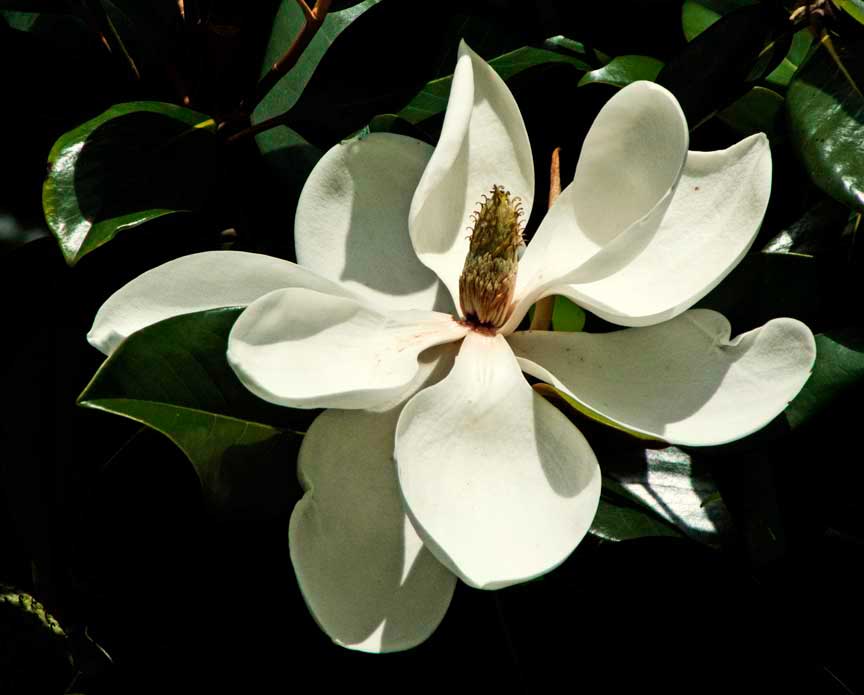Magnolias: the Essence of Summer
Published 4:44 pm Thursday, July 23, 2015
Some of my earliest childhood memories involve the intense fragrances of flowers – lilacs, my grandmother’s old roses, and magnolias. Especially magnolias. The perfume of magnolia blooms hanging in the heavy air of an early summer evening right around twilight is magical. I’m immediately 5 or 6 years old again and scampering after lightning bugs. For me, at least, few things are as effective in evoking recollections of times long past as scents.
Magnolias are an interesting group of plants. They’re some of the oldest flowering plants. So old, in fact, that fossils have been found from 100 million years ago. Ancestors of our modern magnolias were alive when the dinosaurs ruled the earth and well before bees and other so-called “smart pollinators” appeared. Magnolia blooms were pollinated by beetles, which were heavier and clumsier than bees, so the flowers evolved with heavy, fleshy petals that could withstand chewing and general rough and tumble treatment. Even today, the flowers still have a relatively primitive structure. They produce pollen that is high in protein, but no nectar, and are still pollinated primarily by beetles.
According to the National Arboretum, there are eight species of magnolias native to the United States: cucumber tree (Magnolia acuminata), which grows as far north as Canada; Ashe’s magnolia (M. ashei), a native of Florida; mountain magnolia (M. fraseri), which is common in the Appalachian Mountains; southern magnolia (M. grandiflora), the tall, iconic tree with leathery leaves and large fragrant blooms; big leaf magnolia (M. microphylla), which has huge leaves and the largest flowers of any species native to the United States; pyramid magnolia (M. pyramidata), a native of the southeastern coastal plain; umbrella tree (M. tripetala), which is unique because the flowers have a foul scent; and swamp magnolia (M. virginiana), which is native to a wide area from New York to Texas.
If you’re looking for a magnolia for your home garden but don’t want one as large as the M. grandiflora, the swamp magnolia would be an interesting choice. Since it only reaches 20 to 30 feet at maturity, it’s considered a small tree or large shrub. It generally has multiple branches with pale gray bark. The leaves are green on top and whitish below and are deciduous in our area. In late May to early June, the swamp magnolia produces fragrant, creamy white blooms that are 4 to 6 inches in diameter. The blooms open in the morning and close at night. They typically last two to three days. In the fall, the swamp magnolia has “cone-like structures” (really aggregate fruits) with seeds enclosed in fleshy red arils, which are high in fat and provide an excellent source of energy for migrating birds.
Once planted, magnolias don’t like to be moved, so it’s important to choose the location of your new tree very carefully. The swamp magnolia prefers full to partial sun and rich, moist, acidic soil, preferably with a pH of 5.5 to 6.5. It’s not subject to any major diseases or pests.
So… if you live in an area where there are several grand magnolias holding court, take an early morning or late afternoon stroll and enjoy their amazing fragrance. Savor it to the fullest so that you’ll be able to recall it when winter descends. Better yet, plant your own magnolia.



